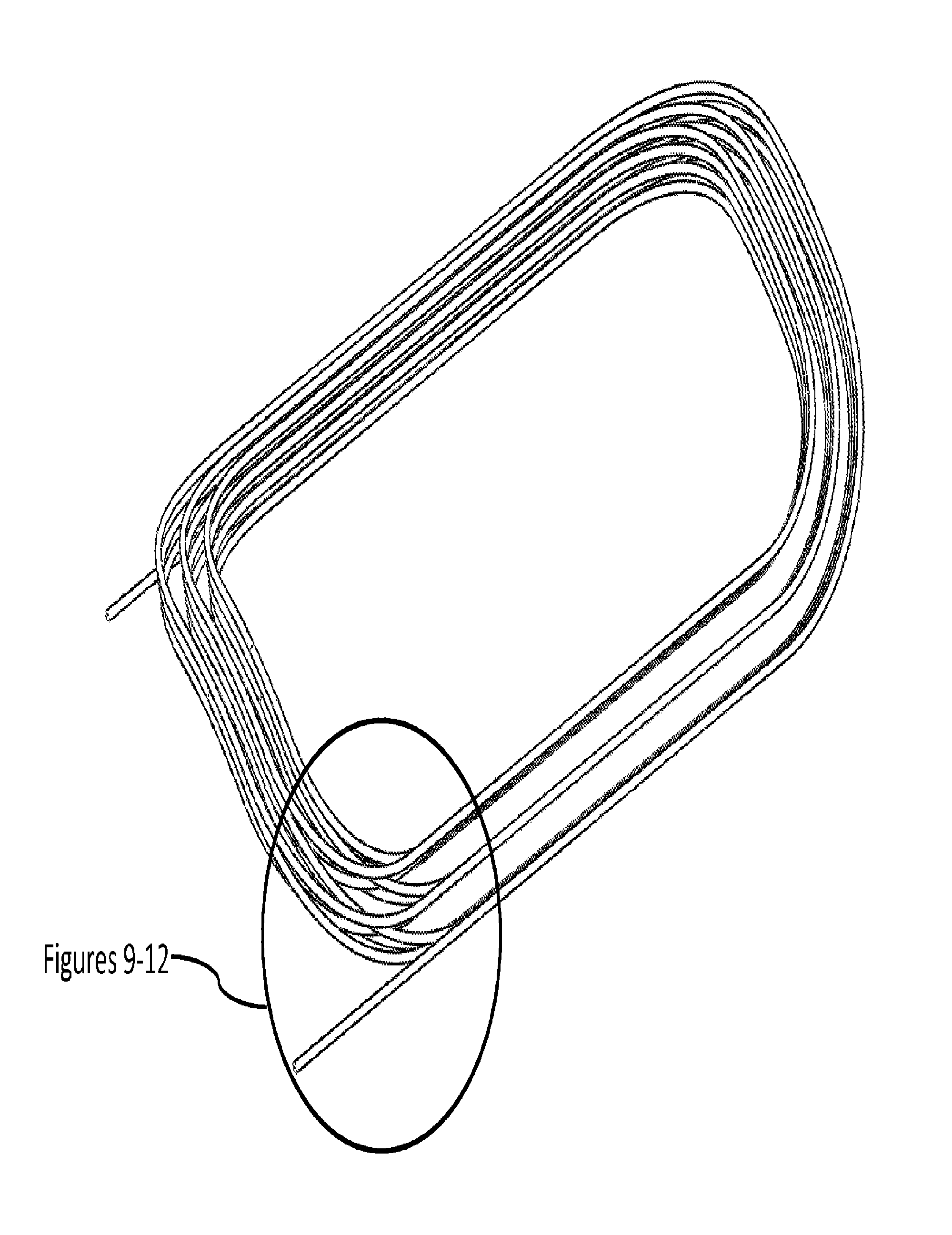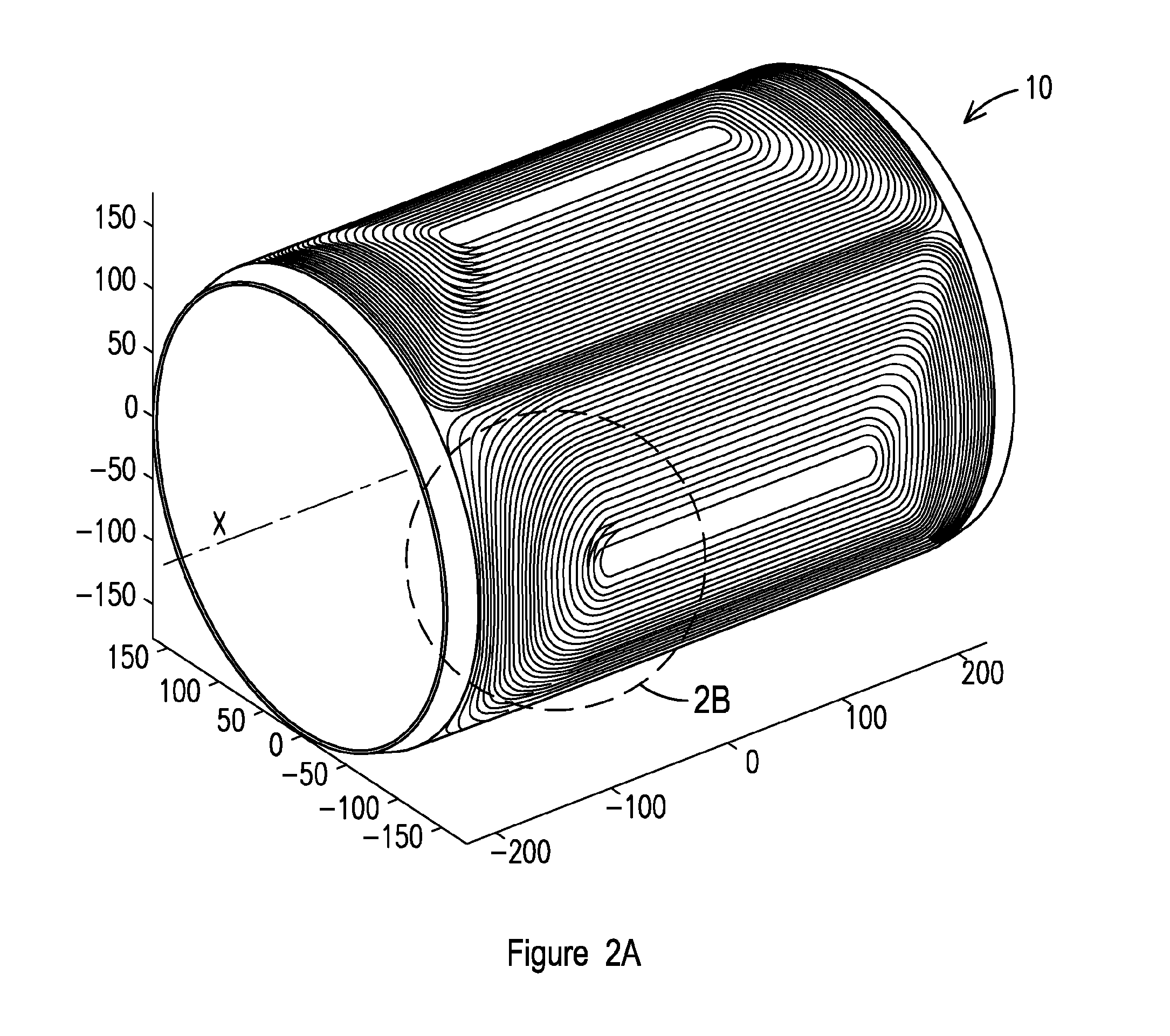Wiring of assemblies and methods of forming channels in wiring assemblies
a technology of wiring assemblies and wiring assemblies, which is applied in the direction of superconducting magnets/coils, magnetic bodies, superconductor devices, etc., can solve the problems of beam loss within the system, performance of beam optics, rapid increase in beam cross sections, etc., and achieve uniform channel width and uniform width
- Summary
- Abstract
- Description
- Claims
- Application Information
AI Technical Summary
Benefits of technology
Problems solved by technology
Method used
Image
Examples
Embodiment Construction
[0132]Before describing in detail particular methods, structures and assemblies related to embodiments of the invention, it is noted that the present invention resides primarily in a novel and non-obvious combinations of components and process steps. So as not to obscure the disclosure with details that will be readily apparent to those skilled in the art, certain conventional components and steps have been omitted or presented with lesser detail, while the drawings and the specification describe in greater detail other elements and steps pertinent to understanding the invention. Further, the following embodiments do not define limits as to structure or method according to the invention, but only provide examples which include features that are permissive rather than mandatory and illustrative rather than exhaustive.
[0133]According to embodiments of the invention, the current density distribution in any cross section perpendicular to the central axis of symmetry of the coil system i...
PUM
| Property | Measurement | Unit |
|---|---|---|
| magnetic fields | aaaaa | aaaaa |
| angle | aaaaa | aaaaa |
| angle | aaaaa | aaaaa |
Abstract
Description
Claims
Application Information
 Login to View More
Login to View More - R&D
- Intellectual Property
- Life Sciences
- Materials
- Tech Scout
- Unparalleled Data Quality
- Higher Quality Content
- 60% Fewer Hallucinations
Browse by: Latest US Patents, China's latest patents, Technical Efficacy Thesaurus, Application Domain, Technology Topic, Popular Technical Reports.
© 2025 PatSnap. All rights reserved.Legal|Privacy policy|Modern Slavery Act Transparency Statement|Sitemap|About US| Contact US: help@patsnap.com



